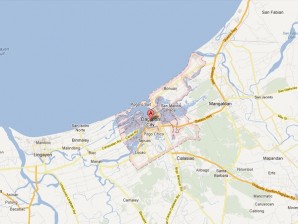‘Mosquito fish’ released into Dagupan’s sewers to fight dengue
DAGUPAN CITY, Philippines—Students and marine experts on Wednesday released thousands of “mosquito fish” into drainage canals and sewers here to help check the spread of dengue fever in the city.
The mosquito fish, introduced to the country in the 1920s to control malaria and known locally as ‘tuyong,” feed on mosquito larvae and can survive in both brackish and fresh water. They are a hardy species that can survive even in water with very low oxygen levels such as sewage.
Around 20,000 mosquito fish were set loose in several sewers in Barangay Tapuac here, said Dr. Westly Rosario, chief of the Bureau of Fisheries and Aquatic Resources’ National Integrated Fisheries Technology Development Center.
“This is where several schools in the city are located, so we chose this area for the launching of the activity,” Rosario said.
Students from the Dagupan City National High School and La Marea Academy joined the activity. Each student was handed a small plastic bag filled with mosquito fish, also called “kataba” and “bubundat,” which were collected from the drainage canals of the fisheries technology center where they have thrived.
Article continues after this advertisementDr. Leonard Carbonell, city health officer, said 85 dengue fever cases have been recorded in the city from January to July 17.
Article continues after this advertisement“This is a lot lower than what the 158 cases in the same period last year. But dengue cases usually peak in the months of August and September,” Carbonell said.
He said no cases of chikungunya have been reported in Dagupan. Both dengue and chikungunya are transmitted by the Aedes aegypti mosquito.
Carbonell said the release of the mosquito fish in the city’s canals and sewers complemented the city government’s efforts to protect residents here from mosquito-borne diseases.
He said his office has distributed mosquito traps and chemically treated nets to public schools that may be used as window screens or curtains in classrooms to kill mosquitoes. It also conducted fogging operations in several villages.
“Of course, the cornerstone of the campaign against dengue is still clean-up activities,” Carbonell said, stressing the need to find and destroy breeding areas of mosquitoes.
Rosario said more mosquito fish will be released in the coming days in other parts of the city.
“This is also to make students and residents aware that there is a biological way of controlling disease-carrying mosquitoes,” he said.
Last year, he said, some 200,000 mosquito fish were released in canals in western Pangasinan towns.
“All fish eat mosquito larvae, but the mosquito-eating fish is hardy and can survive on very low oxygen levels in water,” Rosario said.
